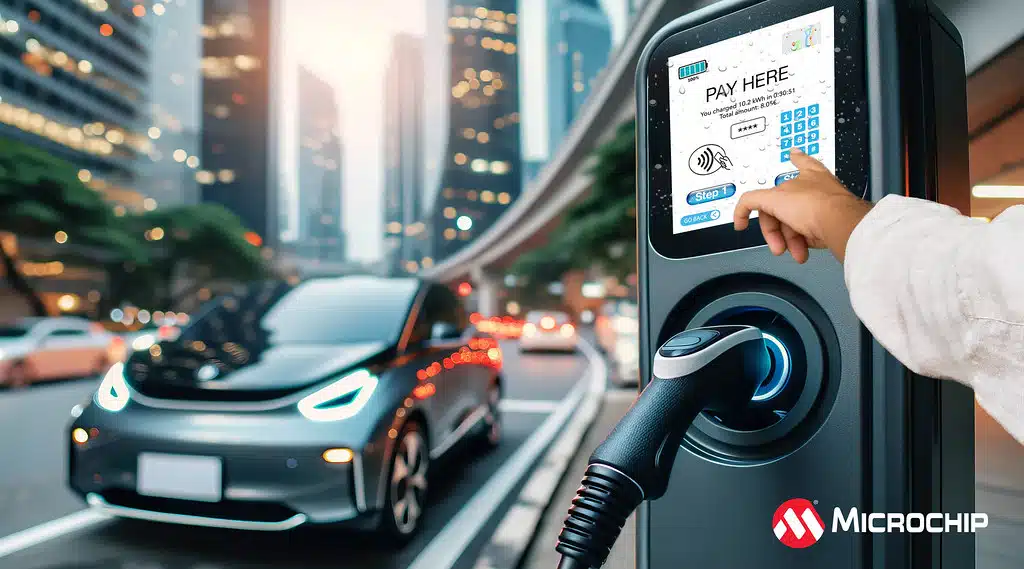Microchip Technology Inc. has launched a new line of touchscreen controllers aimed at making unattended payment terminals at electric-vehicle charging stations more secure.
The new line of controllers, which are part of Microchip Technology’s maxTouch family of touchscreen controllers, encrypt data that flow into the terminal via the touch screen, such as a PIN. In addition, the PCI-certified controllers are designed to prevent tampering by cryptographically authenticating software updates.
Payment terminals that use touchscreen and radio frequency identification technology are vulnerable to cyberattacks via malicious software updates or man-in-the-middle attacks, which occur when a perpetrator positions himself between a consumer and an application with which she is interacting.

Chandler, Ariz.-based Microchip Technology developed the controllers in response to conversations with clients requesting security features on its touchscreen controllers, Vivek Tyagi, product marketing manager for Microchip’s human-machine interface division, says by email.
With EV charging stations becoming more prevalent, Microchip Technology foresaw the need to make it easier for station operators to meet POS terminal security requirements, the company says. There were more than 64,000 EV charging stations in the United States at the end of 2023, up 20% from the prior year, according to statistics from Consumer Affairs.
“We wanted a solution that would provide charger designers with a cost-effective, secure design architecture for implementing credit card payments on their touchscreen,” Tyagi says. “The EV charger makers or merchants do not need to have a separate mechanical keypad or separate touchscreen pad for payment. They can use the main touchscreen with our family of secure touchscreen controllers and save the cost of another terminal.”
While hacking at EV charging stations is not yet a major issue, security of payment terminals embedded in charging stations is a growing concern.
“Hacking has been quite a big issue with POS systems and it’s just a matter of time before it becomes a problem for EV chargers, especially because these terminals are unattended,” Tyagi says. “With a secure touchscreen controller, merchants can build PCI compliance into their design in a relatively cost-effective manner.”





